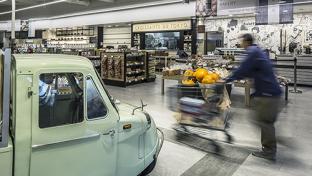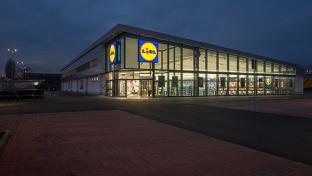Nontraditional Food Channels Poised to Grow Significantly
As consumers look beyond conventional supermarkets to meet their food and beverage needs, such nontraditional channels as club stores, limited-assortment stores, e-grocers and specialty stores are poised for accelerated growth at the expense of more mainstream food retail venues, according to a study by Pentallect, a Chicago-based strategic consulting and business improvement firm.
Pentallect estimates that the nontraditional food channels currently account for $210 billion in consumer expenditures, and projects 7% annual growth for these channels over the next five years, versus 3.5% for foodservice and 1% for traditional retail, which encompasses supermarkets, supercenters, mass/drug, and dollar stores. The nontraditional channels are projected account for 30% of food industry growth over the next five years.
Bob Goldin, a Pentallect partner and co-author of the study, noted that “nontraditional channels represent a ‘sweet spot’ in the food and beverage industry. Their growth is based upon strong consumer appeal and generally favorable business models. Without question, they demand increased attention from suppliers.”
The firm’s research found that a considerable number of consumers plan to try or use these channels more often in the future. Among the reasons for this shift are convenience, a desire to save money, availability of unique items, support of local businesses, and perceptions of better quality – largely of fresh items – than traditional channels.
Pentallect President Rob Veidenheimer observed that “each of the channels has unique consumer appeal and continues to evolve at a very rapid rate. We have studied these channels closely over the past several years and see them as significant share gainers for the foreseeable future.”
The firm conducted comprehensive research and analysis into 10 nontraditional channels – club stores, community-supported agriculture (CSA), ethnic/neighborhood stores such as bodegas, farmers’ markets, food trucks, limited-assortment stores, meal kits/home-delivered meals, online, specialty stores such as bakeries and butchers, and Trader Joe’s, gleaning insights from more than 1,000 consumers and trade sources. The resulting report, “Nontraditional Food Channels: A Key Industry Growth Driver,” updates a major Pentallect report conducted on the topic in 2017.
Perhaps in answer to this threat, many conventional supermarket chains have introduced fresh-focused concepts with curated offerings, among them Giant Food Stores’ Giant Heirloom, Albertsons Market Street, Publix’s rebooted GreenWise Market, Price Chopper’s Market Bistro, and Meijer’s “neighborhood market” locations.






